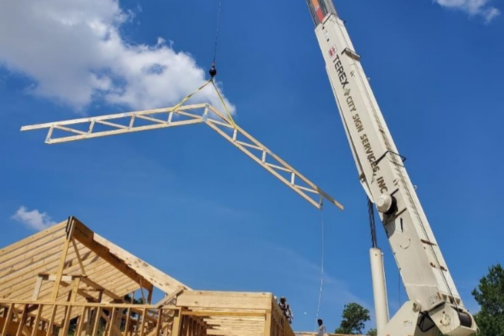Winter storm Uri in 2021 highlighted the vulnerability of Texas’ power grid and the threats to ERCOT, and recent high summer temperatures only increase the concern and emphasize the need to better plan for power resiliency and sustainability. Our electrical grid can’t keep up with North Texas’ growth, and sustainable energy sources aren’t advanced enough to fully fill the gap. Strategic planning will help ensure we can continue to meet rising demand from a growing population and associated business, as well as spreading regional development. Homebuilders, commercial real estate developers, and industrial consumers must find a way to smartly utilize grid power and sustainable resources.
When managed properly, microgrids can provide much-needed flexibility and resiliency. Typically powered by a combination of multi-fuel generators, battery storage, solar panels, or wind turbines, microgrids can be connected to a larger power grid—like ERCOT’s—but can disconnect during a power failure to operate independently and reduce disruption during an outage. They also serve independently to power specific buildings or areas, including healthcare facilities or public services, office buildings, university campuses, and residential neighborhoods.
Additionally, microgrids lessen the burden on ERCOT and offer value for real estate developments. As technology rapidly evolves, microgrids can offer homebuyers and businesses added peace of mind and help set developers and builders apart in a cluttered and competitive landscape by maximizing value proposition through lower lifecycle energy costs. Industries like real estate and construction can play a leading role in growing Texas’ distributed energy resources through smart microgrids. Doing so could mean that when another disaster, or overload from extreme heat, occurs, critical infrastructure remains operational and excess microgrid capacity can be pushed into the ERCOT grid.
But implementation of microgrids in North Texas will require thoughtful, purposeful planning. Federal and state legislation has accelerated this effort. McKinney-based Enxchange.io’s capital markets arm helps clients utilize 2022’s Inflation Reduction Act and the 2021 Bipartisan Infrastructure Law to reduce the capital investment outlay for smart microgrids. The Texas Legislature’s 88th session also passed Senate Bill 2627, signed by Governor Greg Abbott and up for a statewide vote in January, which will provide $1.8 billion in grants and incentives to include microgrid developments.
Through a partnership with McKinney-based energy management technology company Enxchange.io, Harrison, Walker and Harper is beginning to optimize its energy assets using the microgrid model. By improving energy consumption and participating in grid interactions through partnerships like this, Texas can take significant strides toward a more resilient, cost-efficient, and sustainable energy future.
Managed microgrids, powered by real-time, data-driven insights, offer a compelling opportunity to achieve cost savings and alleviate the strain on ERCOT’s grid. Microgrids can offer the real estate industry a way to ensure that properties are energy efficient, help ensure reliability, and create value for commercial and residential buyers and tenants—a true win for everyone.
Jordan Harper is the CEO of Harrison, Walker and Harper, a leading construction and industrial services company.
Author





